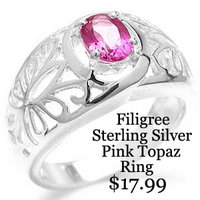An Introduction To The Definition And Etymology Of Sterling
 Sterling, Ster-ling (noun): British money; the ‘Pound Sterling' basic monetary unit of the United Kingdom.
Sterling, Ster-ling (noun): British money; the ‘Pound Sterling' basic monetary unit of the United Kingdom.
Although in today's world the Pound ‘Sterling', and ‘Sterling' Silver have two separate meanings they share the same roots, coming from convergent sources related to ancient British currency.
One speculated origin of the word ‘Sterling’ dates from the Middle-English language, circa 1100 to 1500 A.D., and its word for ‘Little star’: ‘Sterrling’. Stars were a regular feature on English silver pennies minted after the Norman conquests of England. The reason behind this was due to the event that the Norman king, William the Conqueror witnessed when crossing the English Channel, on his way to fight Harold the king of England at the battle of Hastings in 1066 A.D. Looking to the heavens William saw a shooting star, Haley’s Comet, flash across the sky. This was taken as an omen, and after he won the battle gaining the throne of England the stars became a regular feature on Norman England’s Silver currency.
Another proposed origin for the word ‘Sterling’ comes from ‘Easterling Silver’, which was used to refer to a type of Silver coin used as currency in an area of eastern Germany known as the ‘Easterling’. The area was founded around the consolidation of five towns that engaged in substantial trade with England in the 12th Century, they paid for goods imported from England with a currency made of 925 parts Silver.
The English soon noticed the unwavering durability and value of the German coins renaming them ‘Coins of the Easterlings’. Soon enough by decree of the first ‘Plantagenet’ king, Henry II, the alloy was set as the standard for English currency. The metal refiners of Easterling were expedited to England to start refining the Silver for coin production, where the term ‘Easterling Silver’ was later abbreviated to ‘Sterling Silver’. These first editions of ‘Sterling’ currency are known as the ‘Tealby Pennies’, and were introduced as the English currency by King Henry II in 1158. From this period till the mid 20th Century, although the content and purity wavered, Sterling pennies made from Sterling Silver remained a constant feature in British currency.
As units of currency, the British ‘Pound Sterling’ originated from the weight values of a Troy pound of Silver. The Troy weight system came from what was called the ‘Troy System of Mass’, which dates back to 9th Century France and the city of Troyes under King Charlemagne. Troyes was a major European trading city for precious metal and gemstone dealers in the early Middle Ages.
A Sterling Troy pound, consisting of 12 ounces, equaled 240 sterling pennyweights: a pennyweight was literally the weight of a penny. A pennyweight weighed 24 grains; a grain was the weight of a grain seed from the middle of an ear of barley. Originally the British ‘Pound’, before decimalization, reflecting the Troy weight system, consisted of two hundred and forty ‘Sterling’ silver pennies.
In 1971, the UK currency was converted into the metric system in line with rest of Europe. And although the term ‘Pound Sterling’ is still used to refer to British currency made of gold or paper, it is used in a solely figurative sense.
Today, the Troy ‘Ounce’ enjoys exclusive use as a measurement of weight for precious metals such as gold, silver, and platinum, and gems such as opals. And Sterling Silver, while no longer used in circulating currency anywhere in the world, is a respected grade of silver of high purity and hardness used for durable jewelry in daily use.
Copyright © www.silvershake.com. All Rights Reserved.





